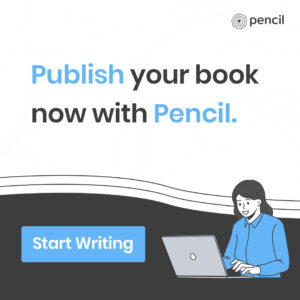How To Publish A Book In 2021 : A Step By Step Guide

The publishing industry has evolved over the decades and has effortlessly adapted to the demands of the changing times. Contrary to popular opinion, in recent years the publishing industry has shown more significant promise and has flourished both in its traditional and digital capacity.
Based on the statistics curated by the India Book Market Report (2016), India is the sixth biggest publisher in the world and the second largest for English language books. That in itself goes to show that book publishing is a booming industry.
As the whole world has come to a standstill in the hands of a pandemic, the digital space has seen an increasing potential for both writers and readers. Audiobooks and e-books have witnessed a significant rise in demand owing to the convenience of use and flexibility of purchase.
The conventional way to go about publishing was construed as intimidating because of the laborious process behind each step; from locating an editor to finding a way to reach out to publishing houses leading up to the actual publishing and distribution of the book. In comparison, publishing in 2020 is a smoother journey. One does not need massive financial backing or contacts within the publishing industry to get their book published. All an author needs is a manuscript and an understanding of which type of publishing they want to go ahead with, and an uncomplicated knowledge of how to publish a book.
In contemporary times, as the publishing industry branches out, writers have various options on how to publish a book and different types of publishing to choose from depending on which is more suitable.
Traditional Publishing
It is, as the name suggests, the most conventional form of publishing wherein the publishers take the onus to screen content and hand-pick manuscripts from a pool of manuscripts submitted by authors directly or via their literary agents. Book deals are then finalized after going over the advances to be paid to the writer along with the division of royalties. The writer is set up with an in-house editor, and the publishing house takes the responsibility and the costs of designing, marketing, and distributing the book. Famous publishing houses such as Penguin Random House India, Harper Collins Publishers India fall under the category of providing traditional publishing. You can choose the publishing house that you deem fit for your manuscript.
Partnered Publishing
It is in process similar to traditional publishing; however, it is distinguished by how much a writer contributes in the marketing and the distribution of their book. Writers often prefer this form of publishing when they are confident of the success of their manuscript. This type of publishing also provides scope for the writer to bargain for a better royalty or get a quicker turnaround time. The contribution of a writer can either be in marketing and publishing of the book or in the pre-press stages and media relations to promote the book. Many times, a writer is capable of selling a large number of books on their own; hence, they buy many copies in advance, invest alongside the publisher and share profits based on revenues instead of fixed margins of royalties. This form of publishing benefits both the writer and the publisher as they both share risks and the rewards of publishing a book.
DIY Self-Publishing
This is an autonomous process of publishing taken up by a writer wherein they utilize the platforms provided by a publishing firm or execute the needful on their own. DIY Self-publishing branches out into limited and expanded publishing.
Within limited publishing, the book is made available for sale only on the specific platform demarcated by the publishing firm or the writer. On the other hand, expanded publishing is defined by the availability of the book for sale across several platforms, including both digital and print formats.
Kindle Direct Publishing (KDP) falls under the category of DIY Self-publishing as it provides publishing services and retails books exclusively on Kindle devices. Ever since the merger of KDP and CreateSpace, KDP Print now offers the same distribution and royalty as CreateSpace.
Supported Self-Publishing
It is a form of publishing for writers who want complete autonomy over the editing, marketing, and distribution process of their books. In this type of publishing, the writer avails only those services which they believe are necessary from a publishing firm. Thereby, all functions that are provided within traditional publishing are meted out as paid services to the writer. The writer doubles up as an entrepreneur for their books wherein they have complete control on the mapping out of the process of design and delivery, date and promotions, pricing strategy, markets to target, and media strategy for their book. The writer has the advantage of receiving the majority of return since they are the ones making most of the investments.
Incubated and Accelerated Publishing
This type of publishing is heavily process-driven. By opting for this form of publishing, writers use the publisher’s platform to publish their work in three stages, i.e., publishing, incubation, and acceleration.
The first stage involves using the publisher’s platform to create, publish, and distribute a book in both e-book and paperback format across various regions. The process of distribution in the publishing stage is the most expansive as the book is made available across all major markets, globally.
The publishing phase is followed by the incubation phase wherein the publishing platform curates data on how the readers are responding to the book on its e-reader app. This data is used to analyze in detail the reading patterns that the book elicits within the readers, thereby providing comprehensive statistics such as: where in the book are the readers going slow; where do they quit the book; what is the reading speed of the reader; where are the majority of readers based out of etc. This data enables the writer to gain insights that can be incorporated within the book to improve the reading experience of the reader. This two-way process is effective as it changes the way people consume stories. It enables book reading to become an active rather than a passive process wherein the readers’ behaviour allows the writer to adapt their book to the requirements of the readers.
The final phase, i.e., acceleration phase comes into effect as the book adapts to the preferences of the readers and gains momentum in both sales and reader behaviour. In this process, the book is further worked upon by a team of professional editors and designers, and a more polished product is then aggressively marketed and distributed. It is made available in various offline stores, presented to partner publishers for purposes of representation in their local markets. The book is also pitched to OTT platforms such as Netflix, Times Studios, and other studios to be translated into screen adaptations.
Pencil Publishing is the first publishing platform in the world which is preparing to provide an incubated and accelerated publishing module. It is a free platform that empowers writers to create, publish, market, and distribute their book worldwide in both paperback and e-book formats. It ensures that the writer’s book is available through the majority of online retailers including Amazon, Flipkart, Google Play Books, Apple Books, and many more. It provides a transparent royalty report which is made available on its publishing dashboard. It offers editing and designing services, and ensures that the right aid is offered to the writer to create, build, and increase their audience.
Many established writers who are backed by substantial monetary funds or want to be associated with a big publishing house often either opt for traditional publishing or partnered publishing. For writers who wish to have complete autonomy over the processes that precede and follow a book launch, DIY self-publishing or supported self-publishing is more viable. For budding writers who require guiding tools to grow both their craft of writing and their community of readers, incubated and accelerated publishing is the more ideal platform.
In the current day and age, there are a plethora of options and branches to choose from when deciding on how to publish a book and which type of publishing one wants to go ahead with for their manuscript. From getting an editor to polishing the manuscript to getting a financer to back the book’s production and distribution, there are various platforms that act as mediators to help a writer publish a book. In essence, for any writer, it is the process of writing that is the most important; finding your voice and creating a story that deftly puts across what you want your readers to feel.




I intend to publish a book with you. Please reply about the necessary information and formalities.
I would like to know if there is any option whereby the author can have her/his book published serially as there is nothing written on this alternative way of publishing a book.
Any helpful insights into the matter, will be highly appreciated.
Please write to us at connect@thepencilapp.com, our publishing advisor will be happy to help!
Thank you so much PENCIL for the kind information. I’m a budding writer and it meant a lot… God bless.
Thank you for your kind words!
I’m quite happy to know that this service exists. As a writer, this couldn’t have come at a better time. Thanks.
Thank you for your kind words!